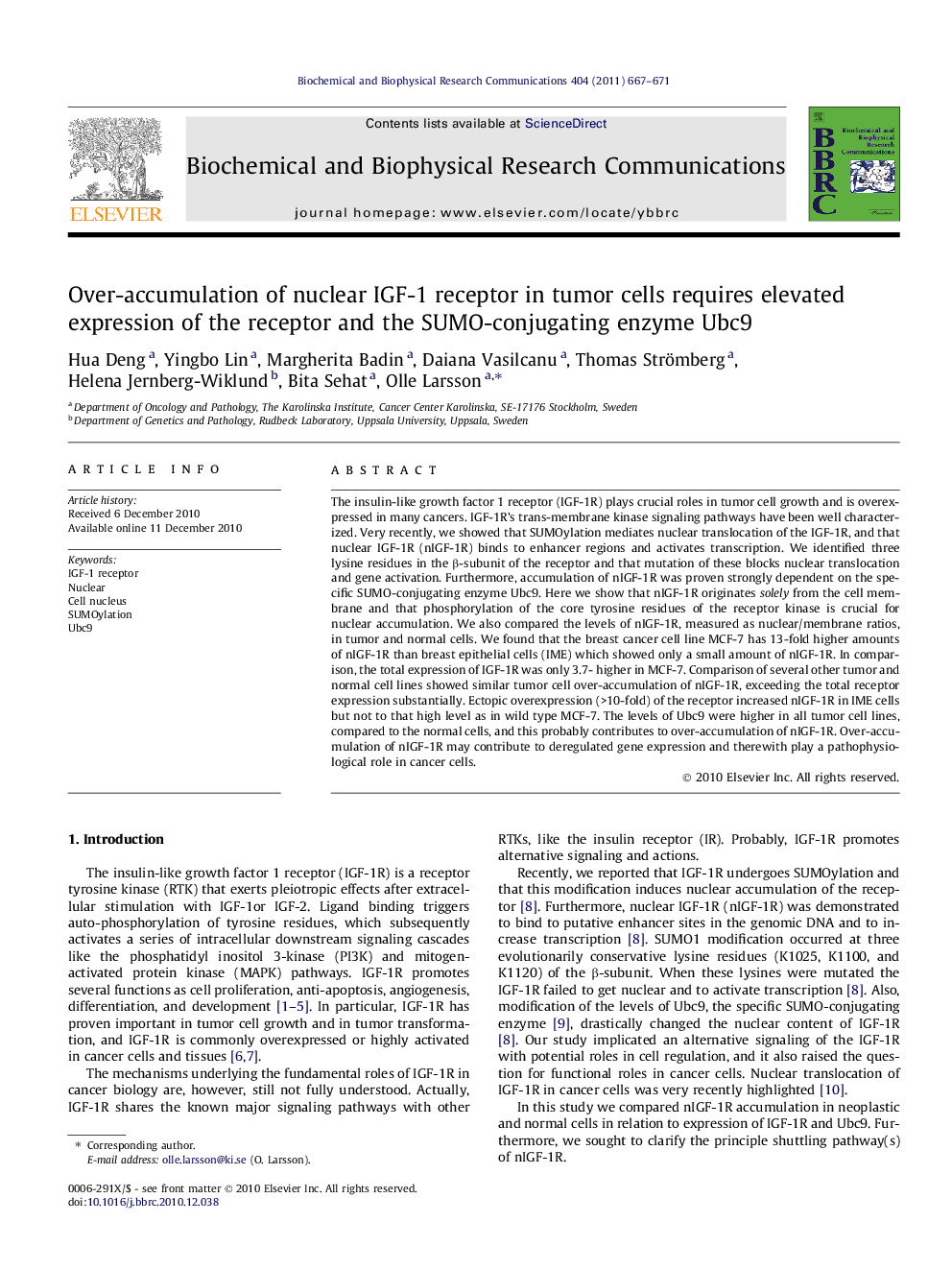| Article ID | Journal | Published Year | Pages | File Type |
|---|---|---|---|---|
| 1930717 | Biochemical and Biophysical Research Communications | 2011 | 5 Pages |
The insulin-like growth factor 1 receptor (IGF-1R) plays crucial roles in tumor cell growth and is overexpressed in many cancers. IGF-1R’s trans-membrane kinase signaling pathways have been well characterized. Very recently, we showed that SUMOylation mediates nuclear translocation of the IGF-1R, and that nuclear IGF-1R (nIGF-1R) binds to enhancer regions and activates transcription. We identified three lysine residues in the β-subunit of the receptor and that mutation of these blocks nuclear translocation and gene activation. Furthermore, accumulation of nIGF-1R was proven strongly dependent on the specific SUMO-conjugating enzyme Ubc9. Here we show that nIGF-1R originates solely from the cell membrane and that phosphorylation of the core tyrosine residues of the receptor kinase is crucial for nuclear accumulation. We also compared the levels of nIGF-1R, measured as nuclear/membrane ratios, in tumor and normal cells. We found that the breast cancer cell line MCF-7 has 13-fold higher amounts of nIGF-1R than breast epithelial cells (IME) which showed only a small amount of nIGF-1R. In comparison, the total expression of IGF-1R was only 3.7- higher in MCF-7. Comparison of several other tumor and normal cell lines showed similar tumor cell over-accumulation of nIGF-1R, exceeding the total receptor expression substantially. Ectopic overexpression (>10-fold) of the receptor increased nIGF-1R in IME cells but not to that high level as in wild type MCF-7. The levels of Ubc9 were higher in all tumor cell lines, compared to the normal cells, and this probably contributes to over-accumulation of nIGF-1R. Over-accumulation of nIGF-1R may contribute to deregulated gene expression and therewith play a pathophysiological role in cancer cells.
Research highlights► SUMOylation mediates nuclear translocation of IGF-1R which activates transcription. ► Here we show that nuclear IGF-1R over-accumulates in tumor cells. ► This requires overexpression of the receptor that is a common feature in tumor cells. ► An increased expression of the SUMO ligase Ubc9 seems to be an involved mechanism too.
